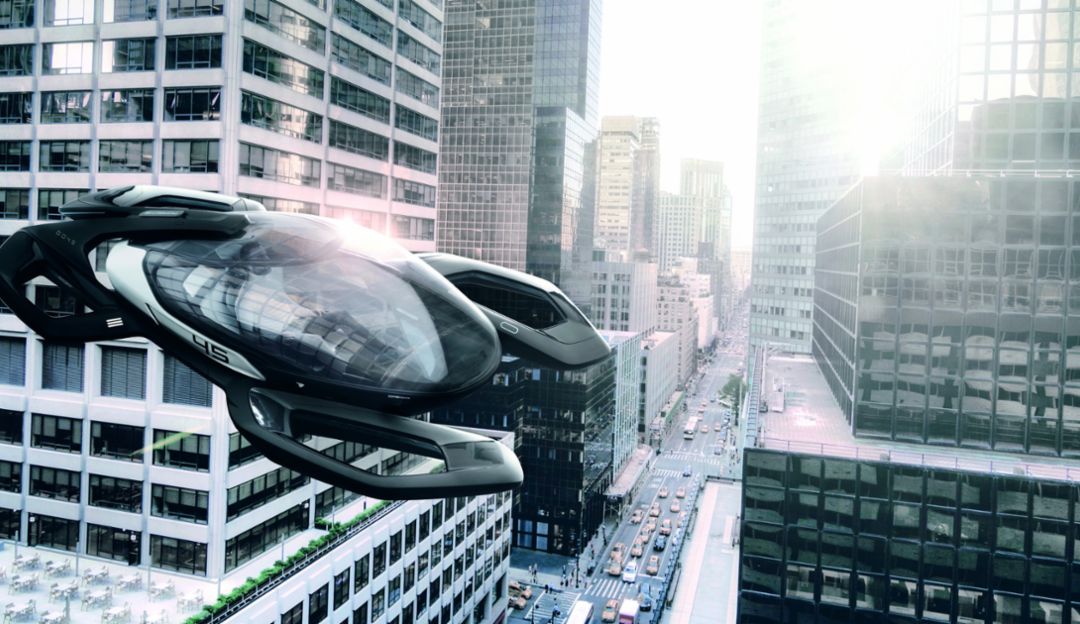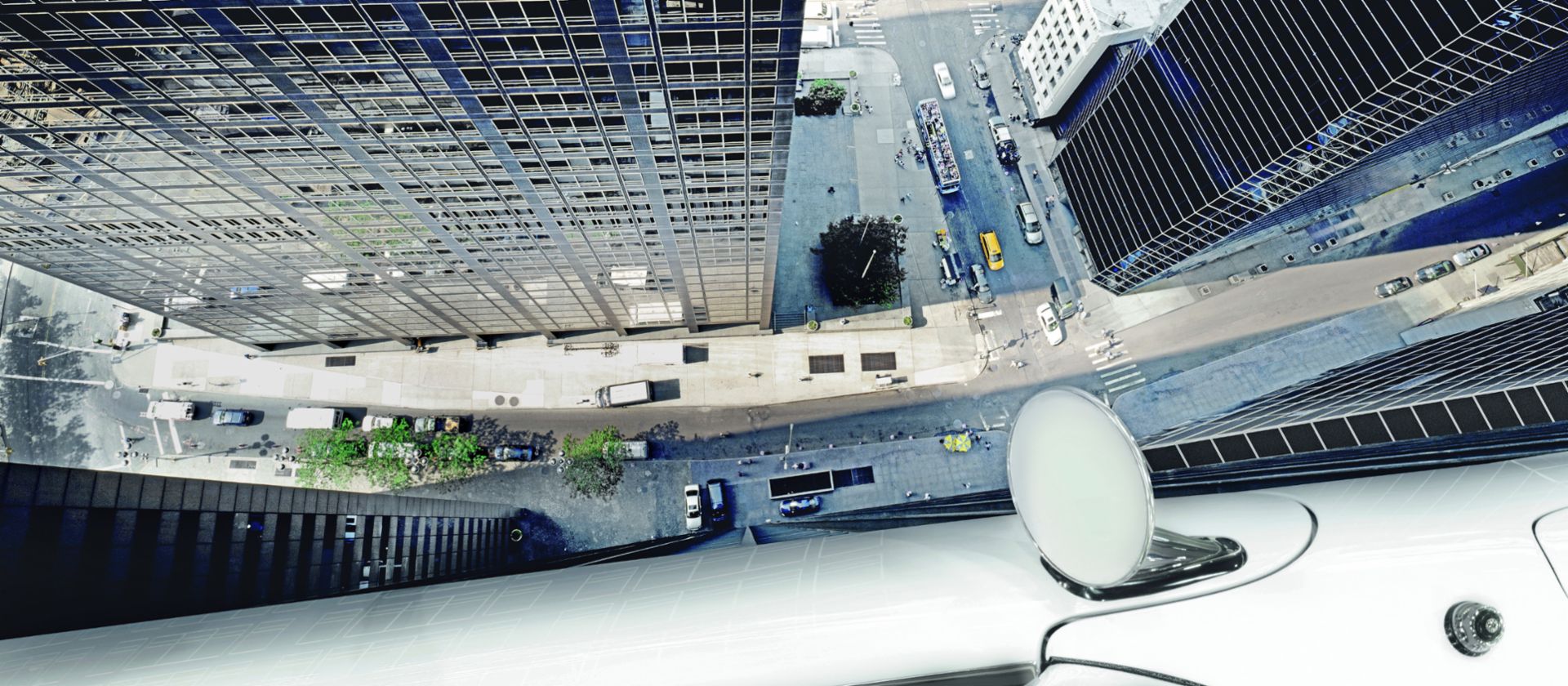Level 6
Level 5—the highest level of automated driving. No human driver and no steering wheel. The requisite technology is expected to be ready for use within a decade. And then what?
If drivers can choose whether to drive or be driven, how will this change our conception of cars?
Level 1 Assisted
Drivers are assisted by systems like cruise control or emergency braking, but need to keep their hands on the wheel at all times.
Will the cars of the future be living rooms on wheels? Or is there yet another level beyond the current classification of automated driving?
“Not so fast,” says Albrecht Böttiger. “Right now we have enough on our hands just coming up with the technology for Levels 3, 4, and 5.” Böttiger, a physicist, directs Porsche’s project facility for driver assistance systems and highly automated driving. At this interdisciplinary and trans-departmental center in Mönsheim near Stuttgart, around 150 specialists are developing technologies for automated driving. Its offices are full of young engineers, hardly any of whom look older than thirty-five. The atmosphere is similar to that of a laboratory, with a Silicon Valley feel. Böttiger and his colleagues have a clear goal: to pave the way for driverless cars and develop solutions for the highly complex third and fourth levels of automated driving. The first cars are expected to reach these levels by the beginning of the 2020s. The technical foundation for reaching Level 5, with its self-driving robocars, will then be laid.
Will we still be “driving”?
Level 2 Partially automated
Drivers are supported by lane-keeping or traffic jam assistants, but need to constantly monitor these systems.
But when we reach the milestone of Level 5, does that mean the hierarchy of levels is complete and the mission is accomplished? “It’s not that easy, of course, and especially not for Porsche. After all, our aim is surely not to make robotic 911 taxis,” remarks Böttiger. So does fully automated driving even make sense for Porsche? Yes—if the brand sets its own course.
Böttiger and his team have to think above and beyond what the automotive industry has defined as Level 5: namely, Level 6. This construct, however, doesn’t represent a concrete scenario with clearly defined criteria, or even necessarily a further linear development of Level 5. Instead, Level 6 could point to a change in consciousness in response to this question: If drivers can choose whether to drive or be driven—or, for that matter, to fly—how will this change our conception of cars?
Autonomous navigation in megacities
Level 3 Conditionally automated
Onboard computers can drive cars on certain sections, but drivers need to keep an eye on everything and take the wheel whenever prompted.
The question is: how do we want to get around in the near and medium-term future? Legions of trend scouts and futurologists—including those at Porsche—are working hard to find out what car buyers are thinking, feeling, and expecting. “That being said, we do know where we want to be by 2025,” says Böttiger. By that time, vehicle interiors could be redesigned to make it easy to engage in activities other than driving. “But if you try to think ten years ahead, you run into too many imponderables.” After all, who could have predicted a decade ago how radically smartphones would transform human communication? In addition, worldwide digitalization and urbanization will make it necessary to view the principal markets and their respective approaches to mobility in a more discerning way.
Level 4 Highly automated
The system handles defined situations (city driving, country roads, parking) autonomously, and drivers can occupy themselves with other tasks.
Experts like Böttiger think it’s very likely that driverless cars will premiere in Asian megacities, in zones authorized exclusively for Level 5 vehicles. “For the West, studies of the next fifteen to twenty years have shown that the main tendencies are toward slower ways of life and more individualistic lifestyles.” That includes the wish to spend less time driving, which would mean having cars handle some stretches on their own, navigate independently into the nearest parking lot, or pick up their owners in the morning to take them to work. “More time, more freedom,” is how Böttiger sums it up. Drivers will not lose options in the future, but instead will be offered an expanded range of opportunities. “For a brand like Porsche, it’s crucial to make technical breakthroughs without undermining the company’s traditions.”
“The feel, design, and overall presence of a Porsche must not be influenced by the technology we have to integrate into it.” Albrecht Böttiger

Driving pleasure despite automation
Level 5 Fully automated
The vehicle drives without a steering wheel and performs all functions autonomously under all conditions.
Might the breakthrough in autonomous driving trigger a countermovement and lead to a renaissance in human driving? Böttiger considers this to be quite possible. In his view, we have arrived at a fork in the road with respect to cars. On the one hand, automated processes will ease the burden on people, yet on the other, the pure pleasure of driving will become more important—in everything from joyrides on winding roads to racing.
“We can’t allow driving pleasure to suffer just because we’re sitting in an autonomous vehicle,” says Böttiger. “We’re looking very hard at what makes a Porsche appealing, even under Level 4 and 5 conditions, which means when the driver is passive.” This would include comfort and convenience, digital entertainment options, and high-grade interiors. The litmus test for future models could be, for example, how a Porsche drives across a mountain pass in autonomous mode. Narrow, winding roads and rapid changes in altitude pose some of the biggest challenges to the technology. “How our cars handle this job—in the sporty and dynamic ways typical of the brand—will reveal the course that Porsche will take,” predicts Böttiger. “And precisely that could be our interpretation of Level 6.” Nevertheless, Porsche owners will still be able to drive themselves over the mountain.


